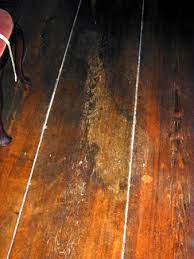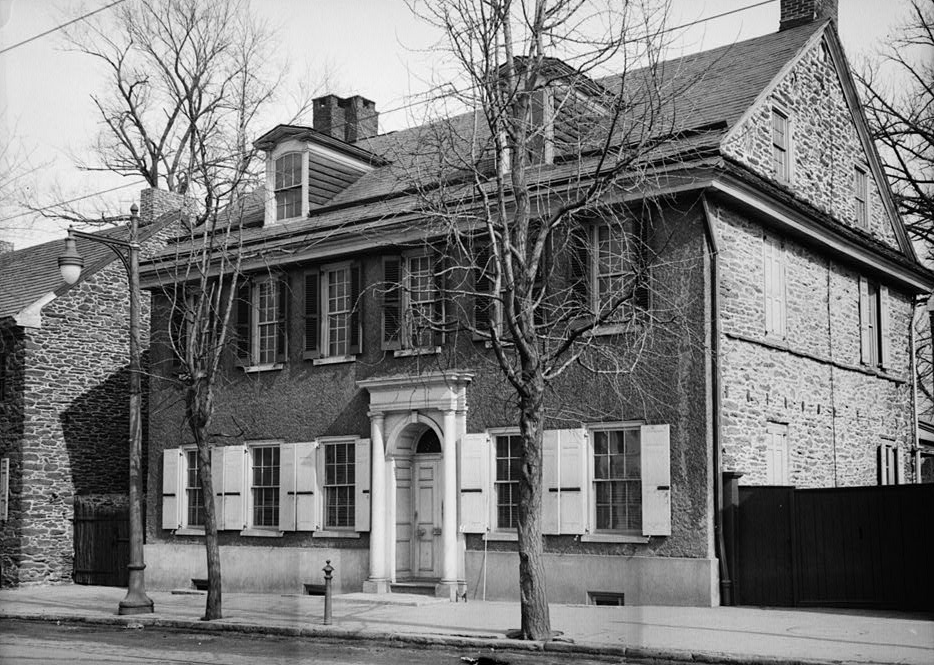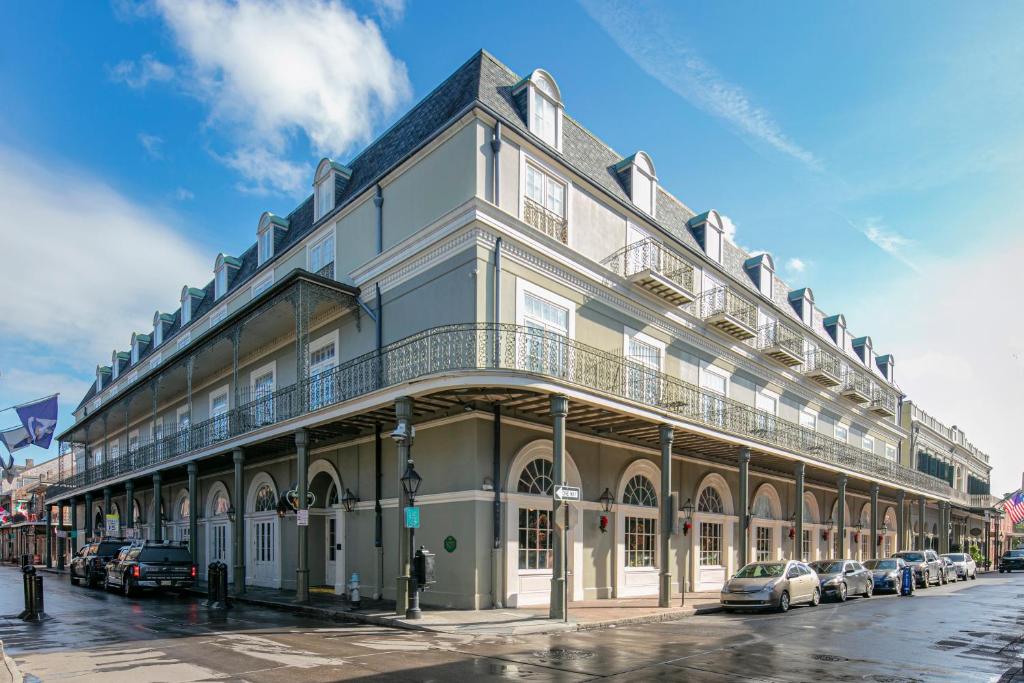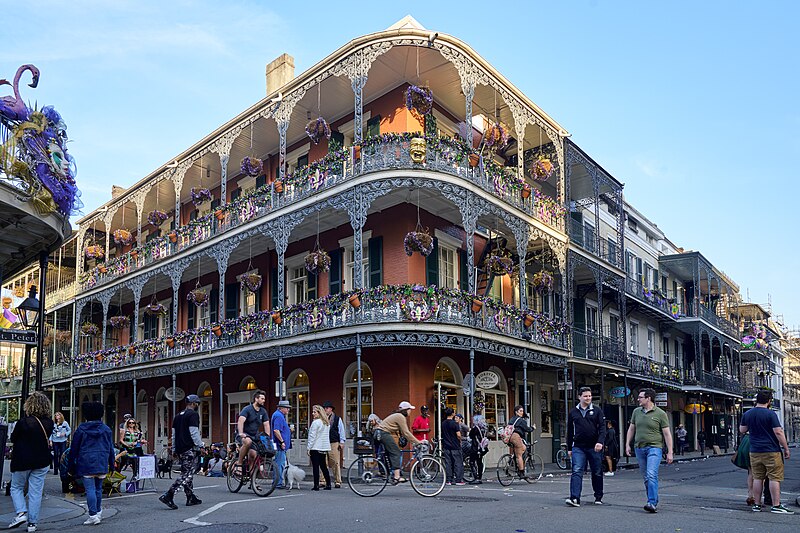Nestled amidst the historic streets of Philadelphia, there stands a hidden treasure from the colonial era — Grumblethorpe. This timeless house, with its intriguing name and storied past, has captured the imaginations of locals and visitors alike. From its construction in the mid-18th century to its role during the American Revolution, Grumblethorpe has witnessed the ebb and flow of history. Steeped in tales of triumph and tragedy, this enigmatic dwelling holds countless stories that have captivated historians and tourists for centuries.
None is more interesting than the infamous blood stains on the floor of the Grumblethrope manor. Today, it is said to be haunted by General James Agnew, who passed away from a gunshot wound on the very same spot.
Join us on a captivating journey through time as we embark on an exploration of the captivating history of Grumblethorpe. From its construction by a German immigrant to its transformation into a historic landmark, as well as the discovery of the blood stain, this article will shed light on the fascinating narratives that have shaped this iconic Philadelphia residence.
The History of Grumblethorpe
Grumblethorpe was constructed in 1744 by John Wister, a wealthy German immigrant who made his fortunes as a wine merchant. The name of the manor reportedly came from a word in a novel that Wister read. The house was designed in the Germanic architectural style, reminiscent of the houses found in the Rhineland region. It was built as a two-and-a-half-story stone structure with a distinctive gambrel roof.
In 1777, the house was inherited by Casper Wister, the son of John. During the American Revolutionary War (April 19, 1775 – September 3, 1783), Philadelphia was occupied by British forces, and Grumblethorpe became the headquarters for General James Agnew, a British officer.

In the Battle of Germantown, which was fought on October 4, 1777, General Agnew was ambushed by over 100 enemy troops. He was shot in the back during his retreat to Grumblethorpe where he bled to death in a pool of blood on the wooden floor.
Almost two decades later in 1793, Philadelphia was struck by a devastating yellow fever epidemic. The house became a refuge for the Wister family, who sought to escape the outbreak as the manor was located in the countryside, away from the city.
The Wister family continued to occupy Grumblethorpe for several generations until it was sold to a merchant in 1868. Over time, the house underwent various renovations and modifications that altered its original appearance. In the early 20th century, the house was divided into multiple apartments.
In the 1941, the historic mansion was acquired by PhilaLandmarks. The organization went on to restore Grumblethorpe to its 18th-century facade. The restoration work including the furnishing of the house, and the cultivation of gardens to reflect the works and hobbies of the Wister family. In 1972, the historic house was successfully listed on the National Register of Historic Places.
The Grumblethorpe Blood Stain
The Grumblethorpe blood stain was said to be the remnants of General Agnew, who passed away in the manor after a gun wound. Little is known about the rescue efforts of General Agnew, albeit historians have claimed that had had a slow and torturous death due to the location of the wound. The gunshot, which was reportedly fired by a sniper, has severed his spine and left him paralyzed.

After his death, servants of Grumblethorpe had failed to clean up the blood stain that now lingers on the northwest room of the ground floor. This is in spite of multiple attempts to clean up the spot over the course of several years.
Eventually, the Wister family have deemed it to be ‘uncleanable’, and have instructed servants to ‘try no more’.
Till this date, the blood stain can still be spotted by visitors touring the famous Grumblethorpe mansion.
Ghost of Grumblethorpe
Throughout the existence of Grumblethorpe, the only documented death is General Agnew. That said, several ghost are said to linger in the house of Grumblethorpe.
None is more famous than General Agnew, who is said to haunt the room where he was treated for his injury and eventually died. Accounts from visitors include the seeing of a black mist or smoke rising from the stain, and the hearing of a painful scream from the room itself. Some also said to have seen the manifestation of General Agnew lying on the floor moaning in pain.
Visitors have also claimed to have seen a chambermaid loitering around the hallways on the ground floor of the manor. Some believe that it is the spirit of Justina Hemberger, the Wister family’s house manager. It is said that her spirit is followed by the smell of bread; she is known to bake bread every Friday evening to distribute it to the needy.
Apart from General Agnew and Justina, staffs and volunteers have had encounter with the paranormal on several occasions. Education Director Diana Thompson reported seeing a black object floating on the ground in the dining room. Other claimed to have seen ghostly figures in the mirror albeit their identity cannot be identified.
It’s important to note that ghost stories are often based on folklore, local legends, or individual experiences, which may or may not have a basis in fact. Some people claim to have had paranormal experiences at Grumblethorpe, while others may dismiss them as imaginative tales or products of suggestion.
To learn more about the ghost stories associated with Grumblethorpe, visit the mansion to learn more. Whether you believe in ghosts or not, exploring the rich history and architectural beauty of Grumblethorpe is a fascinating experience in itself.
Visiting Grumblethorpe in 2023
Today, Grumblethorpe stands as a historic house museum and a cherished landmark in Philadelphia. Visitors can explore the restored house, which offers guided tours and exhibits. These tours provide fascinating insights into the lives of the Wister family, the architectural features of the house, and the historical events that unfolded within its walls. You’ll have the chance to explore various rooms, each filled with period-appropriate furnishings and artifacts that recreate the ambiance of the 18th century.
Adjacent to the house, you’ll find a meticulously maintained garden that reflects the style of an 18th-century kitchen garden that the Wister family maintain. Take a leisurely stroll through the garden, and admire the array of herbs, vegetables, and flowers that would have been cultivated during the colonial period.
Prices are $8 for general admission, $6 for students and seniors, and $20 for a family (2 adult and 2 children). When planning your visit to Grumblethorpe in 2023, it’s advisable to check the PhilaLandmarks’ website or contact them directly for the most up-to-date information regarding hours of operation or admission fees.
As of July 2023, more restoration works are being scheduled for the second half of the year as well as 2024 in a bid to bring back the historic mansion to its former glory.




